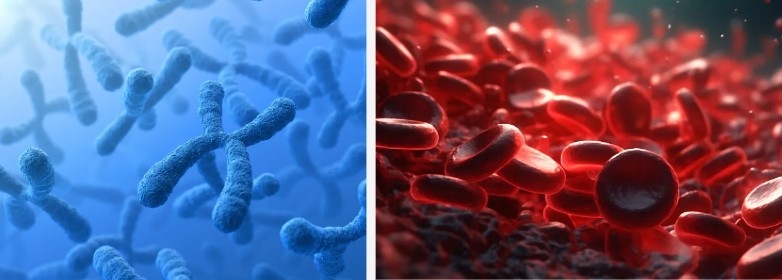Unlocking The Potential Of Kaempferol Powder For A Healthier You
2024-01-30 14:40:36
Kaempferol is an organic compound with the chemical formula C15H10O6. It is a flavonoid compound and is a yellow crystalline powder. It is slightly soluble in water and soluble in hot ethanol, ether or alkaline solution. It is mainly antibacterial, anti-inflammatory, cough-relieving and expectorant. effect.

Kaempferol is a flavonoid compound, also known as kaempferol-3, kaempferol, kaempferol, and caempferol, which is widely found in natural plants such as fruits, vegetables, and Chinese herbal medicines. Effects: Kaempferol has antioxidant, anti-inflammatory, anti-cancer, prevents and treats diabetes, atherosclerosis and osteoporosis, protects nerves, liver and myocardium, inhibits protein kinases and other nutritional and health-care functions. Kaempferol has a very broad market as a health food and medicine.
Preparation
1) Hydrolysis to prepare hydroxyacetophenone intermediate 1.1) Put 30g of dihydromyricetin with a content of more than 98% into the reactor, then add 400g of sodium hydroxide solution with a mass fraction of 15%, stir and mix evenly, raise the temperature and reflux, and proceed Hydrolysis reaction; monitored by high-performance liquid chromatography, the reaction control endpoint is when the hydroxyacetophenone intermediate no longer increases. After 2 hours, the reaction is stopped. Cool the temperature to 30°C, slowly add 50% hydrochloric acid solution dropwise into the reaction solution, adjust the pH to about 6.2, stir for 2 hours, let stand for 1 hour, and filter to obtain a light yellow viscous solid. 1.2) Add 150g of 95% ethanol to the light yellow viscous solid obtained in step 1.1), heat and reflux for 1 hour, then filter while hot to obtain a solid, then add 90g of 95% ethanol to the solid, heat and reflux again for 1 hour, and reduce to Allow to stand for 2 hours at room temperature, then filter and dry to obtain 17.8 g of a light yellow solid, namely hydroxyacetophenone intermediate (2-hydroxy-1-(2,4,6-trihydroxyphenyl)acetyl).
2) Catalytic ring closure to prepare crude dihydrokaempferol 2.1) Put 17.8g of the hydroxyacetophenone intermediate obtained by the reaction in step 1.2) into the reaction bottle, add 92g of DMF, and stir until the hydroxyacetophenone intermediate is completely dissolved. 2.2) Add 3.55g of proline to the solution in step 2.1), raise the temperature to 65°C and keep the temperature constant. Dissolve 13.9g of p-hydroxybenzaldehyde in 20g of DMF and slowly add it dropwise into the reaction bottle, and finish the dripping in about 2 hours. After the dripping is completed, the temperature is raised to 70°C and kept warm, and a catalytic closed-loop reaction is carried out. Monitored by high performance liquid chromatography, the reaction control endpoint is when the dihydrokaempferol intermediate no longer increases. The reaction ends after about 7 hours. 2.3) Lower the solution obtained in step 2.2) to room temperature, add 350g of 5% glacial acetic acid solution, stir for 2 hours, and slowly precipitate a solid. Filter, wash the filter cake with water until neutral and dry to obtain 27.6g of crude dihydrokaempferol. 3) Prepare kaempferol by oxidation and replace step 2.
3) 27.6g of the obtained crude dihydrokaempferol was put into the reaction bottle, 275ml of 65% ethanol was added, stirred evenly, then 6g of anhydrous potassium carbonate was added, oxygen was introduced, and then the temperature was raised to reflux to perform an oxidation reaction, and high performance liquid chromatography was performed. Monitor, and the reaction control endpoint is when kaempferol no longer increases. The reaction ends after about 8 hours. Lower to room temperature and leave overnight, filter to obtain a yellow solid, add 200g of water, reflux for 2 hours, filter, wash the filter cake with water and dry to obtain 22.3g of kaempferol, content 98% (HPLC).
use:
Anti-cancer
As the most common flavonoid, long-term dietary intake of kaempferol reduces the risk of cancer. Studies have reported that high intake of kaempferol can reduce the recurrence of late-stage colorectal adenoma, and, compared with other daily dietary flavonoids, high intake of kaempferol can also significantly reduce the risk of pancreatic cancer. The latest research shows that kaempferol can also inhibit hepatocyte growth factor (HGF) and its receptor tyrosine protein kinase, which are related to the growth and metastasis of medulloblastoma in children. Therefore, dietary kaempferol can be used to prevent and prevent medulloblastoma. Treat this disease.
Anti-infection and anti-inflammatory
Research shows that kaempferol has good antibacterial activity and is also effective against methicillin-resistant Staphylococcus aureus (MRSA). The K-Br disk method shows that a concentration of 50 mg/tablet can make the inhibition zone of MRSA reach 8.5 mm, which also has good antibacterial activity against Vibrio cholerae and Enterococcus faecalis. In terms of antiviral effects, kaempferol can exhibit concentration-dependent inhibition at non-cytotoxic concentrations.
In terms of anti-inflammatory, kaempferol mainly achieves anti-inflammatory effects by inhibiting the expression of inflammatory factors.
Diabetes prevention and treatment
Atherosclerosis (AS) is a chronic inflammatory disease of the blood vessel wall. Studies have shown that kaempferol can not only inhibit copper ion-induced oxidation of low-density lipoprotein (LDL) into oxidatively modified low-density lipoprotein (ox-LDL) , and can also reduce the expression of CD 36 protein on the surface of THP-1 macrophages, prevent the cells from uptake of ox-LDL, thereby preventing the occurrence of atherosclerosis.
Diabetes is an endocrine and metabolic disease that seriously threatens human health, and its incidence is increasing at an unprecedented rate. Studies have shown that kaempferol has the effect of being an agonist with the hypoglycemic drug rosiglitazone, but its adverse reactions are far weaker than rosiglitazone. It can increase the response of 3T3-L1 cells to glucose without affecting lipogenesis. The uptake indicates that it is expected to become a new generation of insulin sensitizer

_1737093401309.png)
